No products in the cart.
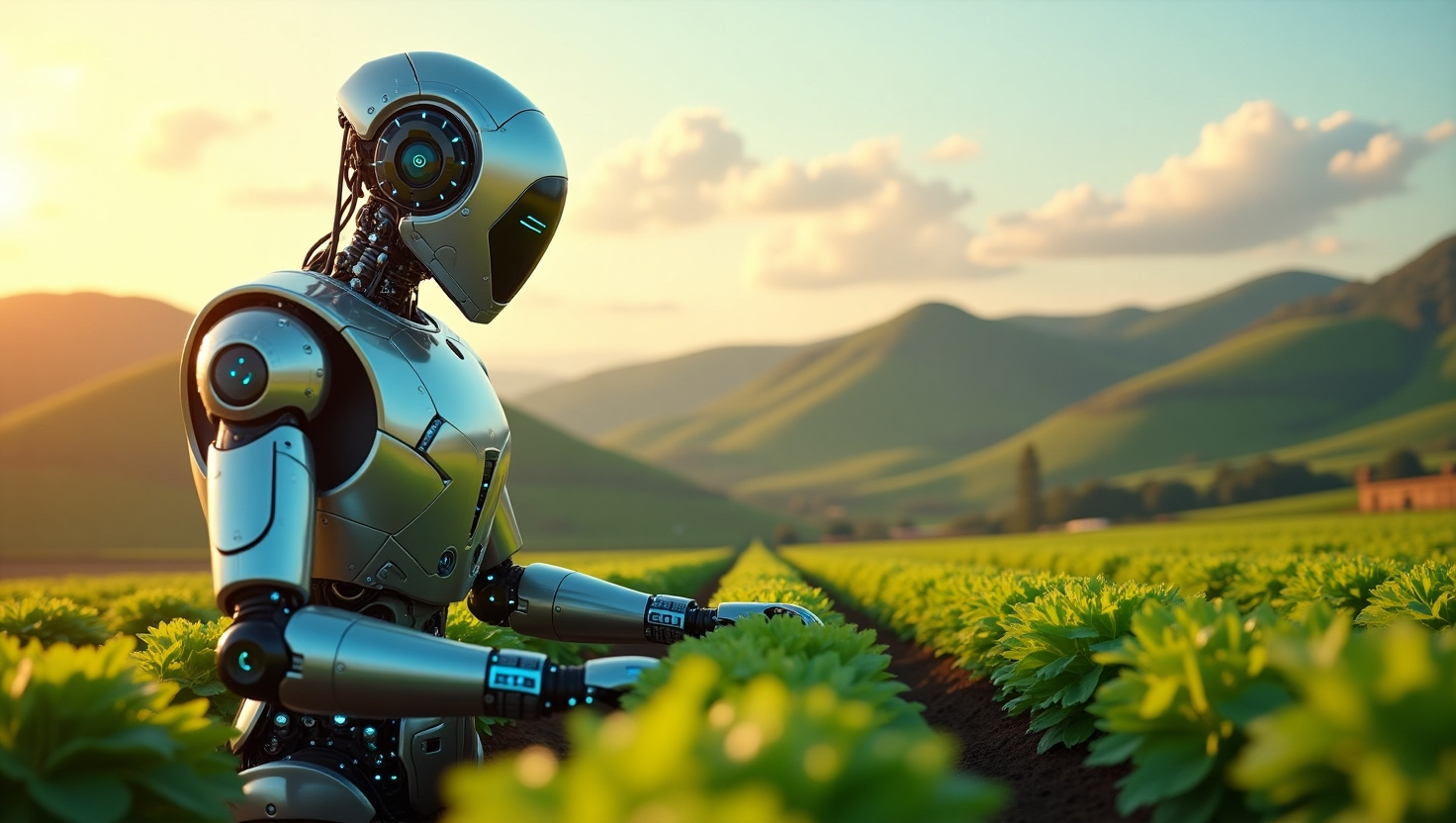
1. Introduction:
In today’s fast-evolving agricultural sector, technology is not just an advantage—it’s a necessity. Smart agriculture has emerged as a revolutionary approach to farming, combining cutting-edge innovations to enhance productivity, resource efficiency, and sustainability. At the core of this transformation are Artificial Intelligence (AI) and the Internet of Things (IoT)—two powerful technologies that are reshaping the way farms operate.
AI and IoT in farming work hand in hand to solve critical challenges faced by modern agriculture. From precision crop monitoring to automated irrigation systems, these technologies enable farmers to make real-time, data-driven decisions. AI processes massive volumes of agricultural data, while IoT devices collect that data through smart sensors, drones, and connected farm equipment—together delivering actionable insights that improve yield and reduce environmental impact.
This perfect synergy between AI and IoT is laying the foundation for a smarter, more resilient agricultural future. As global food demand rises and climate conditions become increasingly unpredictable, integrating these technologies into farming practices is no longer optional—it’s essential.
2. Understanding AI and IoT in Agriculture
To grasp the full potential of AI and IoT in agriculture, it’s essential to understand what these technologies mean in the context of farming. Artificial Intelligence (AI) refers to computer systems that can analyze data, learn from patterns, and make decisions—much like a human, but faster and with more precision. In agriculture, AI is used for crop prediction, pest detection, disease diagnosis, and automating labor-intensive tasks such as planting and harvesting.
On the other hand, the Internet of Things (IoT) in agriculture involves a network of smart devices—such as soil sensors, weather stations, drones, and GPS-enabled equipment—that collect and transmit real-time data from the field. These devices monitor everything from soil moisture levels to livestock movement, allowing farmers to act quickly and efficiently.
When AI and IoT are combined, they create a powerful system known as AIoT (Artificial Intelligence of Things). In this setup, IoT devices gather continuous field data, which is then analyzed by AI algorithms to generate insights and automate decision-making. For example, if a soil sensor detects low moisture levels, AI can trigger an automatic irrigation system, ensuring optimal water use without manual intervention. This synergy leads to data-driven farming, where operations are not only more efficient but also more sustainable.
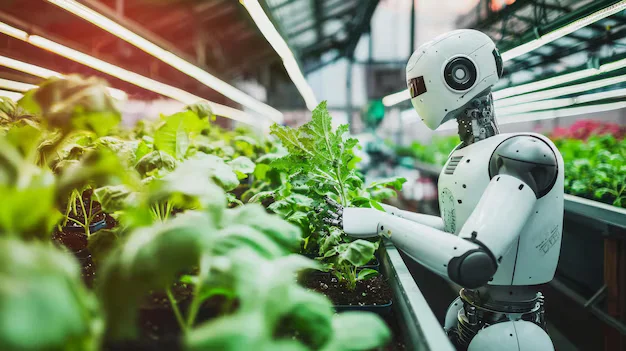
3. Applications of AI in Smart Farming
Artificial Intelligence is driving major breakthroughs in the field of smart agriculture, offering farmers powerful tools to improve productivity and sustainability. One of the most impactful applications is AI-powered crop monitoring. Using drone imagery and machine learning models, AI can detect early signs of diseases, nutrient deficiencies, or pest infestations—long before they become visible to the human eye. This early detection enables timely intervention, reducing crop losses and minimizing the need for excessive pesticide use.
Predictive analytics in farming is another game-changer. By analyzing historical data, weather forecasts, soil health, and market trends, AI helps farmers make accurate yield predictions and informed planting decisions. These forecasts allow for better planning, reducing waste and optimizing resource allocation. For instance, knowing when and where to plant a certain crop based on data-driven insights can lead to higher yields and lower input costs.
Beyond the field, AI in farm management is streamlining operations on a larger scale. From automating routine tasks like irrigation scheduling to optimizing supply chains and managing finances, AI tools provide farmers with real-time insights for better decision-making. This level of AI-powered farm management supports more precise, profitable, and sustainable farming practices, making agriculture smarter from soil to sale.
4. IoT Use Cases in Agriculture
The Internet of Things (IoT) is rapidly reshaping how modern farms operate by enabling seamless data collection and real-time monitoring. One of the most common applications is the use of smart sensors to monitor key environmental factors like soil moisture, nutrient levels, temperature, and humidity. These IoT-powered sensors provide continuous feedback, allowing farmers to make precise adjustments in irrigation and fertilization, leading to better crop health and reduced resource wastage.
Another significant IoT application in smart farming is livestock tracking and health management. Wearable devices and biometric sensors can monitor an animal’s location, activity levels, temperature, and vital signs. This data helps farmers detect health issues early, monitor breeding cycles, and manage grazing more effectively, ultimately improving animal welfare and farm productivity.
Remote monitoring powered by IoT devices provides farmers with real-time visibility into their operations from anywhere. Whether it’s checking greenhouse conditions through an app or receiving alerts about water leaks in the irrigation system, this level of control reduces manual labor and operational risks. In a world where timely decisions are critical, real-time data collection through IoT technology enables smarter, faster responses that benefit both yield and sustainability.

5. Benefits of Combining AI and IoT in Agriculture
The integration of Artificial Intelligence (AI) and the Internet of Things (IoT)—often referred to as AIoT—is unlocking a new era in smart farming. By working together, these technologies deliver enhanced productivity and efficiency across all aspects of agriculture. AI algorithms analyze data collected by IoT sensors in real time, offering actionable insights that help farmers automate tasks like irrigation, fertilization, and pest control. This reduces human error and ensures operations are optimized for the best possible results.
Another major advantage of AIoT in agriculture is cost reduction through precision farming. By using data to apply water, pesticides, and fertilizers only where and when needed, farmers can significantly cut input costs. Predictive maintenance of machinery and early detection of crop diseases also help avoid major losses, keeping farm operations lean and cost-effective.
Lastly, this tech-driven synergy promotes improved sustainability and resource management. AIoT supports climate-smart agriculture by minimizing waste and conserving water, energy, and soil health. As environmental concerns grow, adopting AI and IoT technologies allows farmers to meet modern demands while protecting natural resources for future generations.
6. Challenges in Implementing AI and IoT
While AI and IoT bring transformative benefits to agriculture, there are significant challenges that must be overcome to fully realize their potential. One of the primary obstacles is infrastructure and connectivity issues. Many rural farming areas still lack stable internet connections, which are crucial for real-time data transmission from IoT sensors to AI systems. Without reliable connectivity, it becomes difficult to harness the full power of these technologies, limiting their effectiveness.
Another challenge is the high initial investment and maintenance costs associated with AI and IoT systems. The upfront expenses of installing IoT sensors, automated machinery, and AI software can be prohibitively expensive for many farmers, especially those with smaller operations. Additionally, ongoing maintenance and updates add to the long-term costs, making it a challenge for farmers to justify the investment.
Lastly, data privacy and technological literacy are concerns that cannot be ignored. Many farmers are not familiar with the complex technologies involved, making training and education crucial for successful adoption. There are also concerns about the security of the data being collected, as sensitive information about crop performance and farm operations may be vulnerable to cyber threats if not properly protected.
7. Real-World Examples and Case Studies
Across the globe, numerous farms and agri-tech companies are successfully utilizing AIoT (Artificial Intelligence and the Internet of Things) to revolutionize farming practices. These companies are leading the way in demonstrating the tangible benefits of integrating AI and IoT in agriculture.
For instance, John Deere, a global leader in agricultural machinery, has embraced AI and IoT with its smart tractors and automated systems. By equipping tractors with sensors and AI-powered systems, the company has significantly increased efficiency in planting and harvesting, allowing farmers to make more precise decisions and reduce waste. This technology helps farmers optimize field conditions and adjust operations based on real-time data, ensuring more productive crops.
Another remarkable example is The Climate Corporation, a subsidiary of Bayer, which leverages predictive analytics and IoT to provide actionable insights for farmers. Their FieldView platform collects data from a variety of sensors in the field and uses AI algorithms to generate personalized recommendations for planting, fertilizing, and irrigation schedules. Farmers using this platform have seen significant increases in crop yields, demonstrating the power of AIoT in maximizing efficiency.
In terms of measurable outcomes, precision irrigation systems powered by IoT and AI have proven to reduce water consumption by up to 30%, while AI-driven disease detection systems have resulted in a 20% reduction in pesticide usage on some farms. These innovations showcase how AI and IoT not only improve productivity but also foster sustainable practices.
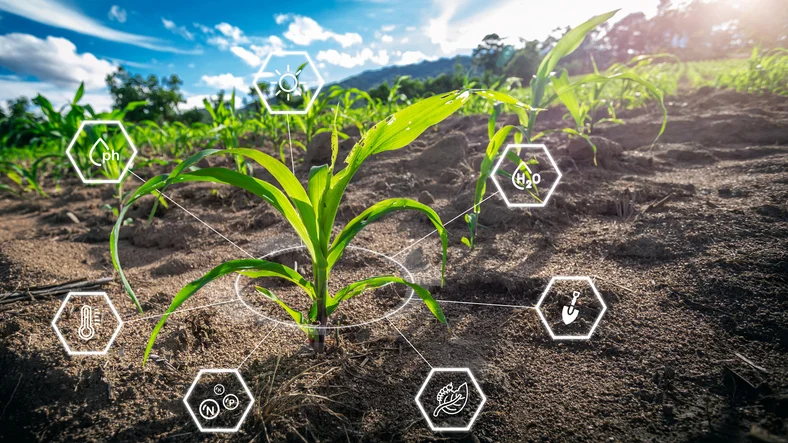
8. The Future of AIoT in Farming
As AIoT (Artificial Intelligence and the Internet of Things) continues to evolve, the future of farming is looking increasingly promising, with new advancements shaping how crops are grown, monitored, and managed. The integration of AI and IoT is set to revolutionize agriculture in the coming years, driving smarter, more efficient, and more sustainable practices.
8.1 Emerging Trends in AIoT Integration
In the near future, we can expect even more seamless integration of AIoT technologies, with smart devices becoming increasingly capable of working together to provide farmers with real-time insights. Autonomous machinery, such as self-driving tractors, drones for monitoring, and AI-powered harvesting robots, will become commonplace. These innovations will reduce human labor while increasing precision in farming practices. Additionally, the expansion of 5G networks will significantly enhance connectivity in rural areas, ensuring that IoT devices can operate with low latency and greater reliability, further optimizing farm operations.
8.2 AIoT’s Role in Climate-Resilient and Sustainable Agriculture
AIoT is poised to play a pivotal role in creating climate-resilient and sustainable agriculture. With climate change creating unpredictable weather patterns, AI and IoT technologies can enable farmers to respond more effectively to environmental challenges. For example, AI-powered predictive analytics will allow farmers to forecast climate patterns, while smart irrigation systems will optimize water use based on real-time data from weather sensors and soil moisture levels, reducing waste and conserving vital resources.
Additionally, AI-driven crop breeding systems will help create drought-resistant and pest-resistant crops, ensuring better yields even under challenging conditions. With the global population set to increase, sustainable farming practices powered by AIoT will be critical in meeting food demands without compromising the environment.
8.3 What Farmers and Businesses Can Expect in the Next Decade
Over the next decade, farmers and agri-businesses can expect continued improvements in precision agriculture and data-driven farming. The proliferation of smart sensors and AI algorithms will lead to highly personalized farming recommendations, ensuring that resources are used efficiently, costs are minimized, and yields are maximized. Agri-tech companies will provide more affordable AIoT solutions, making these technologies accessible to small and medium-sized farms.
As AI and IoT technologies continue to evolve, farms will become more connected, automated, and sustainable. The integration of AIoT systems will ensure that farming operations are not only more efficient but also more eco-friendly, supporting the broader goals of sustainable agriculture for future generations.
9. Conclusion:
In conclusion, the integration of AI and IoT has the potential to transform agriculture into a highly efficient, sustainable, and climate-resilient industry. From smart crop monitoring and predictive analytics to real-time data collection and precision farming, these technologies are enabling farmers to make more informed decisions, optimize their operations, and reduce environmental impact. By leveraging AI-powered automation and IoT devices, farming practices can now be fine-tuned to maximize productivity while minimizing waste and resource consumption.
The journey toward smart farming is just beginning, but the benefits are already evident. With AI and IoT working in tandem, farmers can gain a more detailed understanding of their operations, allowing for better resource management, cost reduction, and improved crop yields. As these technologies continue to evolve, the possibilities for agriculture are limitless, with AIoT poised to address some of the most pressing challenges facing the industry today.
Adopting smart farming solutions is not just an opportunity for large agricultural businesses, but also for small to medium-sized farms. With the growing availability of affordable AIoT tools, it’s more accessible than ever for farmers to embrace innovation. Investing in AI and IoT will not only benefit farmers in terms of productivity and efficiency but will also contribute to sustainable food production for the future, ensuring that agriculture can continue to meet the world’s growing food demand in an environmentally responsible way.
The future of farming lies in the hands of those who are willing to adopt these innovative technologies, unlocking a smarter, more sustainable future for agriculture. The power of AI and IoT is undeniable, and by harnessing these transformative tools, we are setting the stage for a new era of agriculture.
FAQs:
Q1. What is AI in agriculture, and how does it benefit farmers?
Answer: AI in agriculture refers to the use of artificial intelligence technologies, such as machine learning and data analytics, to optimize farming processes. It benefits farmers by improving crop monitoring, disease detection, yield forecasting, and farm management, leading to better decision-making, increased efficiency, and higher productivity.
Q2. How do AI and IoT work together in smart farming?
Answer: AI and IoT work together in smart farming through AI-powered systems that analyze real-time data collected by IoT sensors. These sensors monitor factors like soil moisture, temperature, and crop health, while AI processes this data to make predictions and recommendations, enhancing farm operations and sustainability.
Q3. What are the benefits of using AI and IoT in farming?
Answer: The combination of AI and IoT in farming offers several benefits, including enhanced productivity, cost reduction through precision farming, improved sustainability, resource management, and better decision-making. It helps farmers increase yields while minimizing resource waste and environmental impact
Q4. What are some real-world examples of AI and IoT in agriculture?
Answer: Real-world examples include precision irrigation systems, AI-powered crop health monitoring, and livestock tracking through IoT devices. Companies like John Deere and Trimble have successfully implemented AI and IoT technologies to improve farming efficiency, reduce costs, and boost productivity.
Q5. What challenges do farmers face when implementing AI and IoT in agriculture?
Answer: Farmers face challenges such as high initial investment costs, the need for robust infrastructure and connectivity, and limited technological literacy. Additionally, concerns over data privacy and maintaining the technology can also hinder adoption. However, as these technologies evolve, solutions to these barriers are emerging.
Related Articles
Farm Automation
How AI Is Helping Organic Farmers Stay Competitive
1. Introduction: Organic farming has always been admired for its sustainability, purity,...
Farm Automation
AI Farm Assistants: Are Virtual Advisors the Future of Agriculture
1. Introduction: Imagine having a personal farm assistant who never sleeps, analyzes...
Farm Automation
How U.S. Farmers Use AI to Monitor Weather and Make Better Decisions
1. Introduction: For generations, U.S. farmers have relied on intuition and traditional...
Farm Automation
Can AI Replace Manual Labor on U.S. Farms? Here’s What to Know
1. Introduction: Imagine a cornfield in Iowa where machines handle everything from...
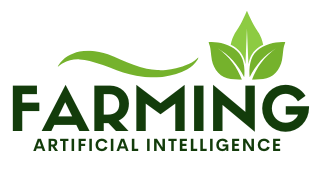

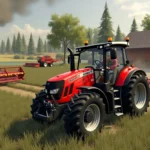
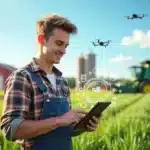

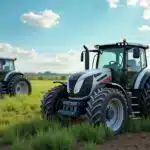

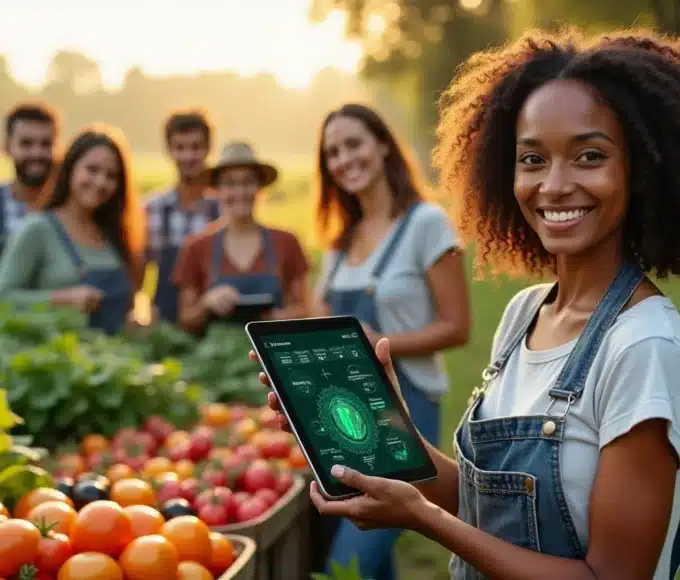
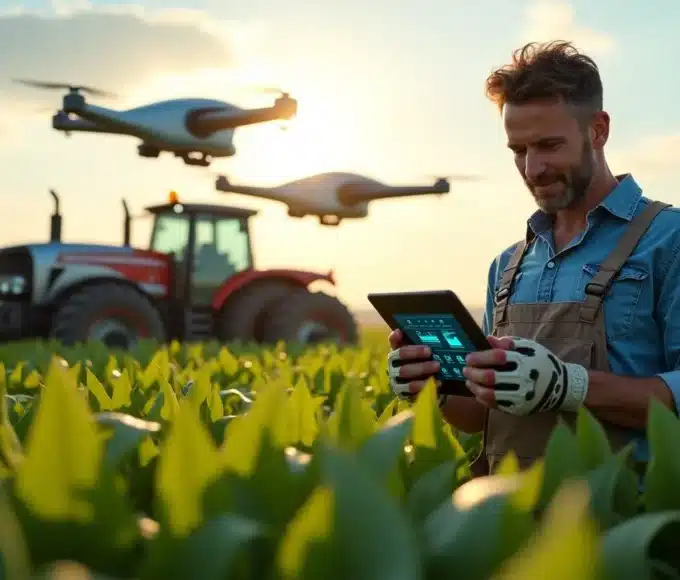
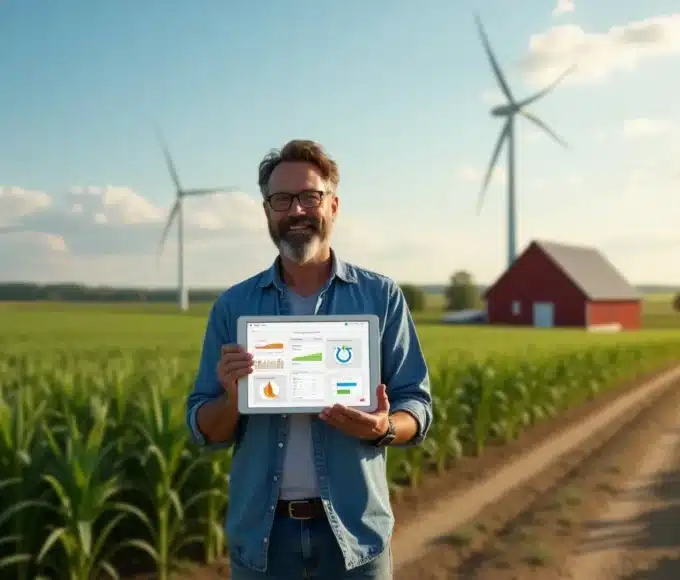
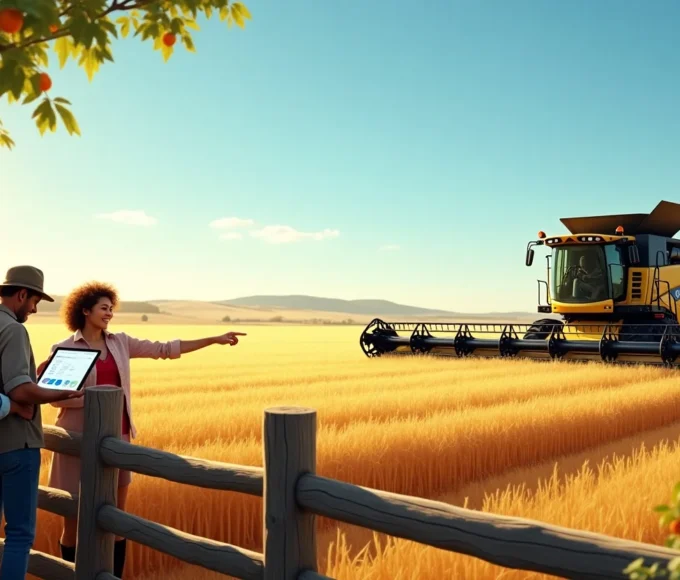
Leave a comment